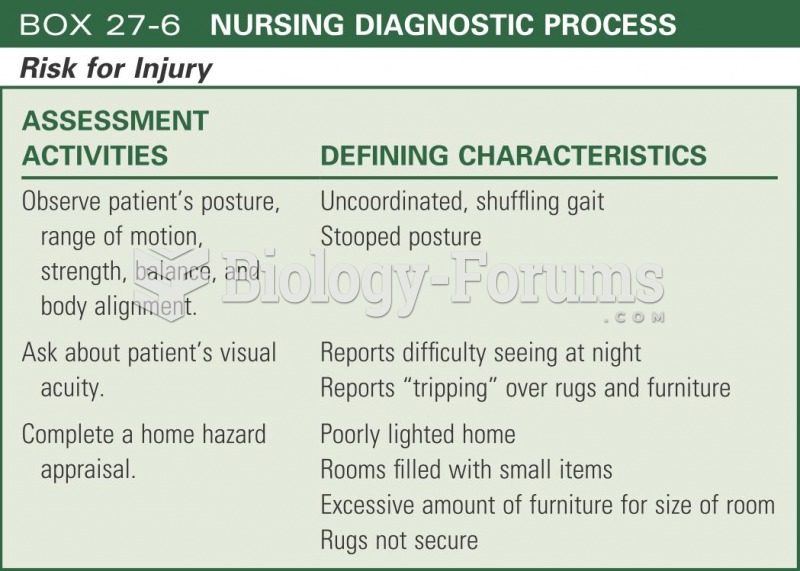|
|
|
The first documented use of surgical anesthesia in the United States was in Connecticut in 1844.
Dogs have been used in studies to detect various cancers in human subjects. They have been trained to sniff breath samples from humans that were collected by having them breathe into special tubes. These people included 55 lung cancer patients, 31 breast cancer patients, and 83 cancer-free patients. The dogs detected 54 of the 55 lung cancer patients as having cancer, detected 28 of the 31 breast cancer patients, and gave only three false-positive results (detecting cancer in people who didn't have it).
Egg cells are about the size of a grain of sand. They are formed inside of a female's ovaries before she is even born.
More than 30% of American adults, and about 12% of children utilize health care approaches that were developed outside of conventional medicine.
Women are two-thirds more likely than men to develop irritable bowel syndrome. This may be attributable to hormonal changes related to their menstrual cycles.







